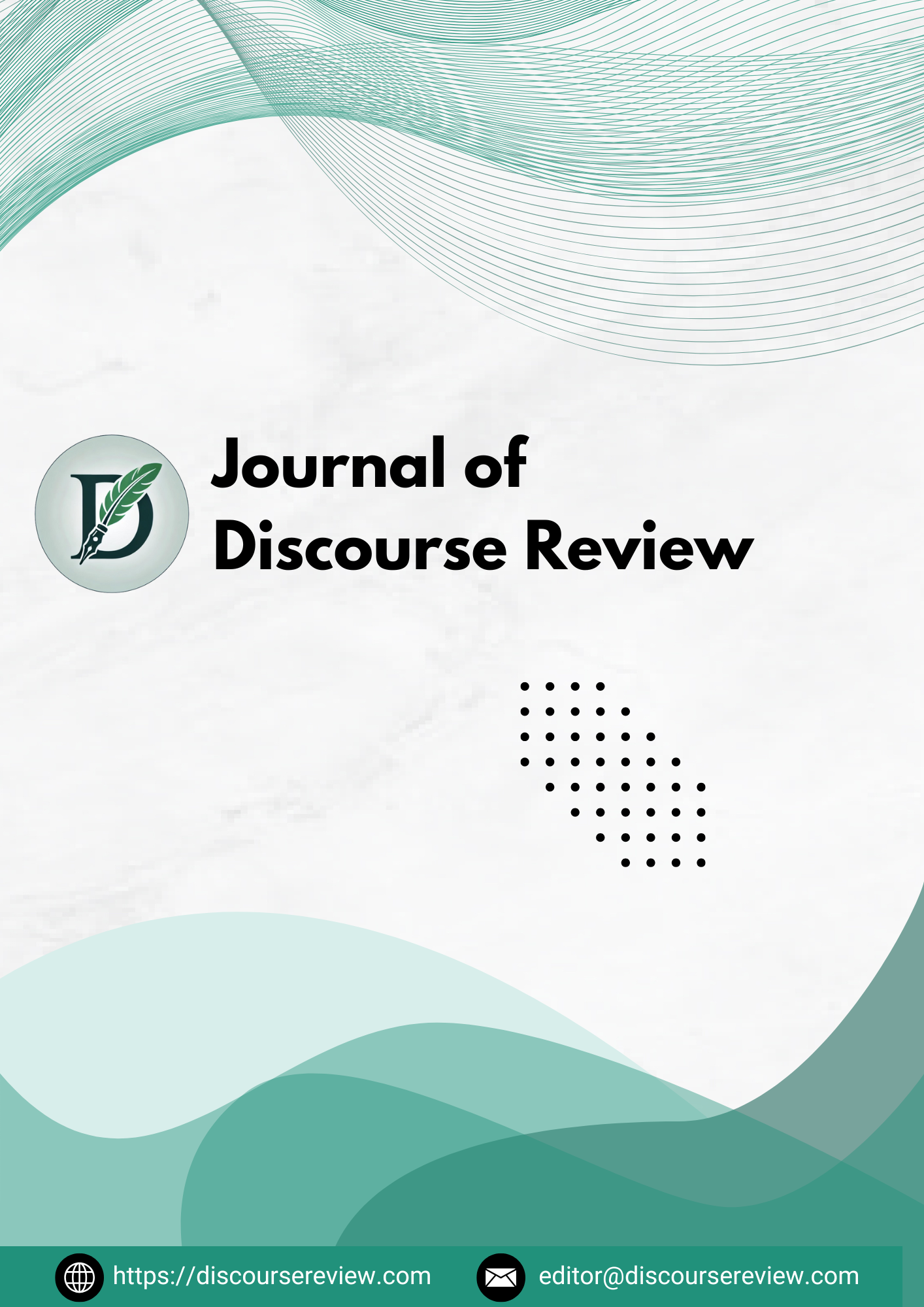
Journal of Discourse Review
Open Access Humanitarian scholarship
7 days
Time to first decision

Open Access Humanitarian scholarship
Time to first decision
Volume: 1 Issue: 1
Year: 2025, Page: 32-45,
Received: Feb. 17, 2025 Accepted: March 31, 2025 Published: April 22, 2025
Indian Indentured Labour Immigration was conceived as an alternative stream of labour supply in the exigencies of abolition of slavery in the British empire. In their quest for the ideal labouring body, the imperial functionaries zoned in on the figure of the ‘Hill Coolie’, i.e. the indigenous inhabitants of the Chhotanagpur plateau as the ideal replacement for the African slave. Accorded with putative ‘primitive’ virtues of industriousness and superior physical strength in colonial ethnological deliberations, the ‘Hill Coolies’’ work efficiency was discussed as far as the British parliament in the 1830s. However, concerns regarding their high sickness and mortality in overseas voyages provided crucial caveats to this discourse. This paper examines the contradictory discursive framings of the ethnological construct of the hardy ‘hill cooly’ which was variedly played out and re-created multiple times in disparate migratory locations. This analysis considers how the broader political economy—including metropolitan capital, labour logistics, and disease transmission—shaped colonial ethnological discourse. Such a discourse always remained tentative, although the subjectivities it generated in the spaces of migration outlived it. The enduring label ‘tea tribes’, used to describe descendants of Chhotanagpur indentured migrants in Assam and North Bengal, reflects how colonial discourses continue to influence contemporary regional politics.
Keywords: Hill Coolie, Race, Tea Tribe, Indentured Immigration, Abolition, Colonial labour migration.
Arnold, D. (2004). Race, place and bodily difference in early nineteenth century India. Historical Research,
77(196), 254–273. https://doi.org/10.1111/j.0950-3471.2004.00209.x
Aronson, M., & Budhos, M. (2010). Sugar changed the world: A story of magic, spice, slavery, freedom, and
science. Clarion Books.
Bates, C., & Carter, M. (2021). Kala pani revisited: Indian labour migrants and the sea crossing. Journal of
Indentureship and its Legacies, 1(1), 36–62.
https://www.jstor.org/stable/10.13169/jofstudindentleg.1.1.0036
Butler, K. M. (1995). The economics of emancipation: Jamaica and Barbados, 1823–1843. UNC Press Books.
Carter, M. (1996). Voices from indenture: Experiences of Indian migrants in the British Empire. Burns and Oates.
Carter, M. (2000). Across the Kalapani: The Bihari presence in Mauritius. Centre for Research on Indian Ocean
Societies.
Clarke, C., Peach, C., & Vertovec, S. (Eds.). (1990). South Asians overseas: Migration and ethnicity. Cambridge
University Press.
Curtin, P. (1998). The rise and fall of the plantation complex. Cambridge University Press.
Drayton, R. (2000). Nature’s government: Science, imperial Britain and the “improvement” of the world. Yale
University Press.
Dutta, A. K. (2018). Tracking kala azar: The East Indian experience and experiments. In B. Pati & M. Harrison
(Eds.), Society, medicine and politics in colonial India. Routledge.
Engerman, S. L. (1983). Contract labor, sugar, and technology in the nineteenth century. The Journal of Economic
History, 43(3), 635–659.
Ghosh, K. (1999). A market for aboriginality. In G. Prakash, G. Bhadra, & S. Tharu (Eds.), Subaltern studies
(Vol. 10). Oxford University Press.
Guha, A. (2014). Planter raj to swaraj: Freedom struggle & electoral politics in Assam. Tulika Books.
Haines, R., Shlomowitz, R., & Brennan, L. (1996). Maritime mortality revisited. International Journal of
Maritime History, 8(1), 1–17.
Haraksingh, K. (2003). Labour movements in Caribbean history. Palgrave Macmillan US.
Hobsbawm, E. (2015). Worlds of labour: Further studies in the history of labour. Hachette UK.
Kale, M. (1998). Fragments of empire: Capital, slavery, and Indian indentured labor migration in the British
Caribbean. University of Pennsylvania Press.
Lakra, B. R. (2024). ‘Tea tribe’ or ‘scheduled tribe’? Vexed Adivasi identity in Assam. Sociological Bulletin,
73(4), 398–408.
Lal, B. V. (2012). Chalo Jahaji: On a journey through indenture in Fiji. ANU E Press.
Mohapatra, P. P. (1985). Coolies and colliers: A study of the agrarian context of labour migration from
Chhotanagpur, 1880–1920. Studies in History, 1(2), 185–215. Sage Publications.
Mohapatra, P. P. (2004). Immobilising labour: Regulation of indentured labour in Assam and the British West Indies, 1830–1926. VV Giri National Labour Institute.
Mongia, R. (2018). Indian migration and empire: A colonial genealogy of the modern state. Durham University
Press.
Northrup, D. (1995). Indentured labor in the age of imperialism, 1834–1922. Cambridge University Press.
Pratap Kumar, P. (Ed.). (2015). Indian diaspora: Socio-cultural and religious worlds. Brill.
Saikia, A. (2011). Forests and ecological history of Assam, 1826–2000. Oxford University Press.
Schuler, M. (1986). The recruitment of African indentured labourers for European colonies in the 19th century.
In P. C. Emmer (Ed.), Colonialism and migration: Indentured labour before and after slavery (pp. 125–
145). Martinus Nijhoff Publishers.
Sharma, J. (2011). Empire's garden: Assam and the making of India. Duke University Press.
Shepherd, V. (2007). Prelude to settlement: Indians as indentured labourers. In T. D. Gupta (Ed.), Race and
racialization (pp. 45–58). Canadian Scholars’ Press.
Shlomowitz, R. (2024). Mortality and migration in the modern world. Taylor & Francis.
Skaria, A. (1997). Shades of wildness: Tribe, caste and gender in western India. Journal of Asian Studies, 56(3),
726–745. https://doi.org/10.2307/2659607
Sturman, R. (2014). Indian indentured labor and the history of international rights regimes. The American
Historical Review, 119(5), 1439–1465. https://doi.org/10.1093/ahr/119.5.1439
Taylor, J., & Woroniecka, K. (2024, October). Tracing the colonial legacy of UK sugar. Feedback Global.
https://feedbackglobal.org/white-gold-tracing-the-colonial-legacy-of-uk-sugar/
Tinker, H. (1974). A new system of slavery: The export of Indian labour overseas, 1830–1920. Oxford University
Press.
© 2025 JDR Academic Trust. This is an open-access publication distributed under the terms of the Creative Commons Attribution 4.0 International License (CC BY 4.0). https://creativecommons.org/licenses/by/4.0/
Kumar, S. (2025). Creating Racial Genealogies; Producing the Primitive Aborigine in the Quest for the Ideal Imperial Immigrant Labourer. Journal of Discourse Review, 1(1), 32-45.